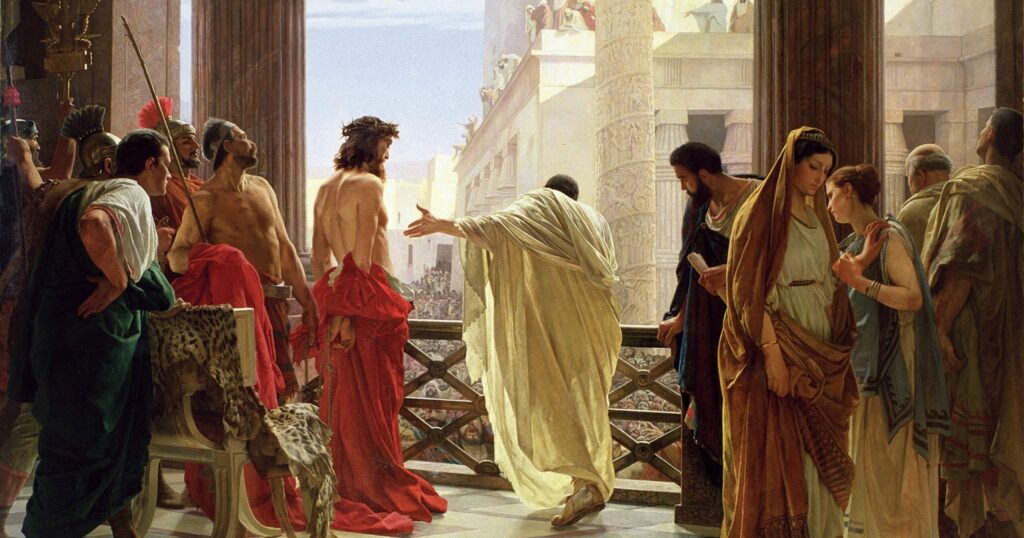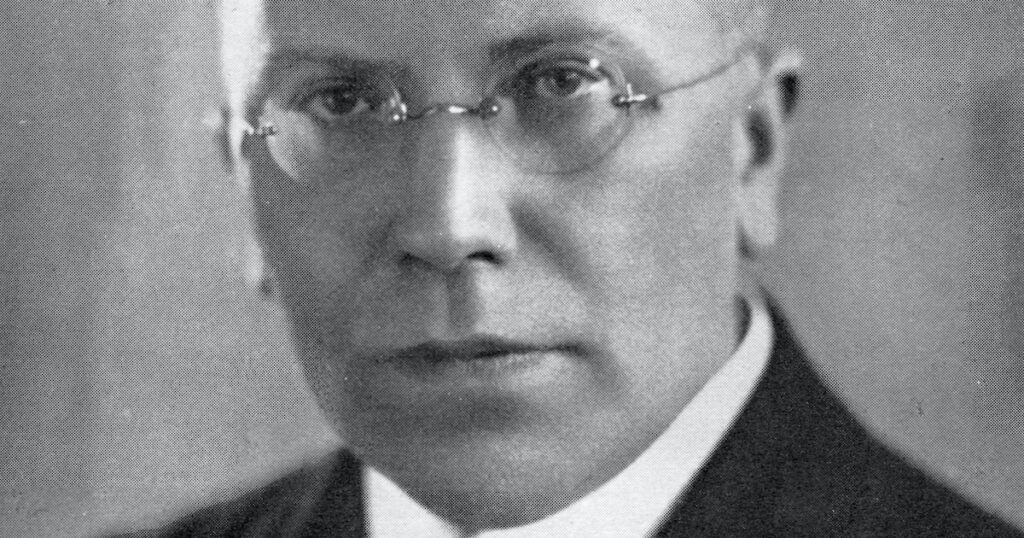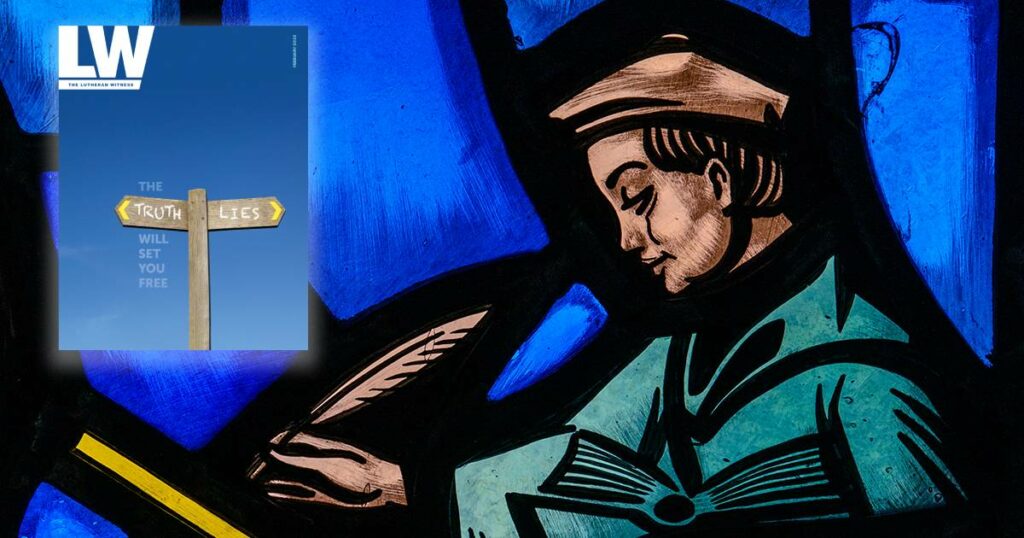by Paul L. Maier
Christianity has faced attack ever since Christ rose and ascended into heaven. The last 50 years, however, have witnessed a return to the attacks that attended the first years of Christianity. Early Christian apologists such as Aristides (died A.D. 134), Justin Martyr (died ca. 165), Athenagoras (died ca. 190) and Tertullian (died ca. 220) effectively blunted these persecutions. We need such apologists today.
What Is Apologetics?
Apologetics is the opposite of apologizing for the faith, as if a Christian might whisper to an unbeliever, “I’m sorry for being a Christian. Please don’t tell anybody.” Rather, apologetics means “to defend.” Early apologists were so successful in defending the faith that they often wrote to the Roman emperor, adding their names and return addresses. The result was an astounding success. Emperor Trajan (ruled A.D. 98–117) told the younger Pliny, governor of Bithynia, not to hunt Christians or take unsigned accusations against them. The next emperor, Hadrian (ruled A.D. 117–138), was so angry at the anti-Christian skeptics of his day that he threatened to punish them if they continued complaining against the Christians.
We need apologists today, even though our church body seems to have lost an appreciation of apologetics. The LCMS has surrendered leadership in apologetics to the Reformed church bodies. Many in our church body are now recognizing this problem. Some of our Concordia universities have established departments of apologetics, some linked to departments of evangelism, as is quite appropriate. Concordia University, St. Paul, has the Oswald Hoffman Institute for Christian Outreach; Concordia University Ann Arbor will soon have the Maier Center for Evangelism and Apologetics. Nor should training in apologetics be limited to trained clergy either; see the Concordia Publishing House books by lawyer Craig Parton and others.
This is not to say that God’s Word is powerless, and we must help it along. Rather, current Lutheran apologists enjoy the grand task of “clearing the trash away from the temple door.” No one should have to stumble through the seedy arguments against Christianity launched by skeptics. Their arguments can easily be answered, and so we should follow St. Peter’s advice: “Always [be] prepared to make a defense to anyone who asks you for a reason for the hope that is in you” (1 Peter 3:15).
Apologetics also gives us important new information on the person and work of Jesus Christ. You may object: “More research has already been done on Jesus than any other person, past or present; what else is there to learn?” But just as the Old and New Testaments always provide fresh information or insights upon rereading, so this article will offer new findings and fresh insights in the case of Jesus of Nazareth.
I recently authored a book, The Genuine Jesus: Fresh Evidence from History and Archeology, that shares my delight in uncovering fresh data on the life of Jesus. The subtitle of the book shows the most natural way to do apologetics: Approach the research from your own secular discipline. An astronomer will be fascinated by the Star of Bethlehem. Doctors in medicine have studied the crucifixion and what killed Jesus. Lawyers have delved into the laws of first-century Israel. As an historian, I studied apologetics from the perspective of ancient history. The book, summarized in this article, shows both my own research and how I am indebted to archaeologists and other secular historians.
The first part of the book deals with the attacks on Jesus. A few of these are more informed than others. Most are born of the skeptic’s own speculation rather than factual evidence. Some of the worst attacks are based on forged materials and manuscripts. These attacks are quickly answered with a discussion on the sources of the life of Christ, the New Testament and the commentaries of the Early Church fathers.
Infancy and Youth of Jesus
The chronology of Jesus’ life is an area ripe for apologetic discussions. Most scholars believe Jesus was born either in 4 B.C. or 1 B.C., depending on the eclipses of the moon and the controverted date for the death of Herod the Great. The question remains open.
Many critics deny that Herod the Great’s massacre of the babies in Bethlehem is historical. They claim that Matthew made up the story. And yet, pagan Roman author Ambrosius Macrobius (lived c. A.D. 400) comments on the massacre. Macrobius writes witty treatises that have no trace of Christianity. The following extract came from Augustus’ comments in Macrobius’ book, Saturnalia.
On hearing that Herod, King of the Jews, had ordered his own son (in addition to all boys under the age of two in Syria) to be slain, Augustus commented, “It’s better to be Herod’s pig than his son.”
This witty comment by the Roman Emperor Augustus is a double pun: In Latin, porcum (pig) and filium (son) sound similar. Furthermore, pork was not permitted in Jewish menus. But our interest is in the introductory material, which is simply a garbled commentary on the Bethlehem massacre by a pagan author. First, the statement as it stands is impossible. Herod the Great had no authority in Syria, which is beyond his realm. Syria was a Roman province north of Judea and Galilee, directly governed by a Roman proconsul or legate. Herod would have been terminated by Rome had he killed a single baby outside of his own realm. The fact, however, is disentangled when we learn that the Roman name for Herod’s realm was Syria-Palestina. The suffix “Palestina” was clearly dropped in the centuries of retelling Augustus’ pun.
Second, we would expect an oral tradition to embellish the tale, claiming all babies were killed in the massacre. Macrobius, however, preserves Matthew’s two stipulations: only male babies and 2 years old or less. Furthermore, history knows of no other infant massacres by Herod the Great; he usually targeted full-grown men and women. Macrobius provides critical outside support for Matthew’s version.
Arrest and Trial
Any apologetic discussion of Jesus’ life must also address events and historical figures related to His arrest and trial. The plot against Jesus brewed from the beginning of His ministry. Leaders of the Sanhedrin — including High Priest Annas and his son-in-law, Caiaphas — led the charge. They were not, as some believe, Jesus’ dear friends attempting to keep Him out of trouble with Pontius Pilate and the Romans, but bitter opponents who fundamentally opposed Jesus’ teaching. The Jewish Talmud agrees in the passage that reads “woe to the house of Annas, woe to their serpent-like hissing.”
Josephus, the first-century Jewish historian, gives us many details about Pontius Pilate. As the Roman governor of Judea, Pilate was in charge in the decade A.D. 26–36. Two dates — A.D. 30 or 33 — are potentials for Pilate’s fateful decision to crucify Jesus. In The Genuine Jesus, I show that in A.D. 30, Pilate would not have debated with the crowd concerning Jesus but would have brusquely dismissed them from his tribunal since Pilate was protected by his anti-Semitic patron in Rome, Sejanus. A short time later, however, the Roman Senate executed Sejanus for plotting against Emperor Tiberius. Pilate barely survived the bloodbath against Sejanus’ followers.
Thus, in A.D. 33, Pilate could not afford to ignore Jewish wishes after the ultimate threat from Jewish leaders: “If you release this man, you are not Caesar’s friend. Everyone who makes himself a king opposes Caesar” (John 19:12). Now it was Jesus or himself who would survive, and Pilate, to no one’s surprise, allowed Jesus to be crucified.
Previously, the Gospel tells us Pilate was convinced of Jesus’ innocence and tried to persuade the crowd from demanding His death, even sending Jesus to the court of Herod Antipas, son of Herod the Great, who was in charge of Galilee, Jesus’ home district. Antipas, who merely wanted to see Jesus do something miraculous, dressed Him in mock royal attire and returned Him to Pilate. “And Herod and Pilate became friends … that very day, for before this they had been at enmity with each other” (Luke 23:12). Luke does not tell us why they were hostile. It seems likely that Herod Antipas had been writing Emperor Tiberius with word of Pilate’s problems with his Jewish subjects, thus hoping to replace Pilate as governor of Judea.
Crucifixion and Resurrection
The crucifixion and resurrection of Jesus also provide apologetic opportunities. The crucifixion of Jesus mirrored many other crucifixions performed by the Romans. For example, the Romans often forced victims to carry the crossbeam, the patibulum, to the place of crucifixion. The victim was attached to the patibulum, which had a hole at its center. The patibulum was mortised onto the vertical post already standing at the place of execution. For Jesus, this took place at Golgotha, “The Place of a Skull” in Aramaic (John 19:16–17).
Concerning the resurrection, consider this statement from the Apostles’ Creed: “On the third day, He rose from the dead.” And yet, Jesus was in the grave only 36 hours, from Friday to Sunday. This is because Jews used inclusive reckoning; that is, a part counts for the whole. First, days began at 6 p.m. and ended at 6 p.m. Therefore, Jesus’ first day one in the tomb was short, only three hours long from 3 p.m. to 6 p.m. Holy Saturday extended the normal 24 hours, 6 p.m. Friday to 6 p.m. Saturday. Day 3 was a half day: 3 p.m. Saturday to approximately 6 a.m. or sunup on Sunday.
We do not use an inclusive numbering system, but that does not mean they could not back then. Consider this a simple illustration of how it worked 2,000 years ago: If you want to take 3.5 gallons of water on a desert trip, how many 1-gallon jars are necessary? Four jars.
Infinitely more important is the resurrection itself. According to the Gospels and subsequent teaching of Christianity, a stupendous phenomenon was involved: the return to life of someone who was dead. But the resurrection of our Lord has had many skeptics. Some have simply denied supernatural phenomena. Other critics declare that neither nature nor its laws change. Any resurrection is impossible. People do not rise from the dead today, nor did they then.
Skeptics and some historians have offered explanations for the empty tomb, such as the wrong tomb theory. The women came to the wrong tomb, and the cemetery custodian said, “You seek Jesus of Nazareth who was crucified. He is not here.” Pointing elsewhere, he added, “Behold the place where they laid Him.” Christian apologists point out that the women would simply have gone to the correct tomb.
The hallucination theory posits a psychological wish fulfillment on the part of the women. Apologists point out that while this psychological phenomenon happens to individuals, mass hallucinations of this sort do not take place.
The salad theory of the resurrection claims that the custodian or gardener had planted lettuce seedlings that were getting trampled by early Christian visitors to the tomb. So the gardener decided to move Jesus’ body elsewhere. Silly as it sounds, it was one of the earliest explanations of the empty tomb.
Swoon theory skeptics claim that Jesus swooned on the cross. The cool of the tomb awakened Him, but because He was so brutalized, others helped Him escape the tomb. Later He died in a nameless location. Apologists rightly argue that a half-dead man needing medical attention would hardly have convinced the disciples that He had died and risen from the dead.
The stolen body theory claims that Jesus’ body was stolen by His friends, such as Joseph of Arimathea and Nicodemus, to hatch the myth of His resurrection. Modern skeptics still regularly use this explanation. Jesus’ Jewish opponents claimed this for two centuries after the resurrection, and it is the only attempt at an explanation that makes any sense. While the tomb was unguarded sundown on Friday to sunup on Saturday, the hastily dispatched guard would first have verified there was a body inside to guard. In the end, all these explanations have one common claim: The tomb was empty.
Accordingly, on the basis of all evidence to date and using proper historical methodology, I must conclude that the tomb of Joseph of Arimathea in which Jesus was buried on Good Friday was, as an historical fact, empty on that Sunday morning. No contrary evidence has ever been found. Luke’s second treatise, the Acts of the Apostles, offers additional support for the resurrection in his report of Jesus’ appearance to Paul of Tarsus on the road to Damascus. Most sites associated with the appearance are locatable today. Much of the Book of Acts has exact locations of sites like this, which Christian tourists enjoy visiting today.
An empty tomb does not prove a resurrection. And yet, the discovery of warnings against grave robbery, the unanimous witness of the disciples in the face of torture and death, and much more point to the most likely conclusion: Christ rose from the dead.
Apologetics is fun for the Christian believer, not an intimidating austere discipline. No apologizing for the faith is required. Quite the opposite is the case, thank God.

This article originally appeared in the September 2023 issue of The Lutheran Witness.






It is great to see LCMS publishing something on Apologetics. As mentioned early in this article, all the sources I have been reading on Apologetics has been outside of LCMS and I often wonder what LCMS may say about some of these teachings. As an LCMS member, it would be great to see a section for Apologetics under Resources on the LCMS website at a minimum. More discussion on the topic in Sunday services would also be much welcomed.